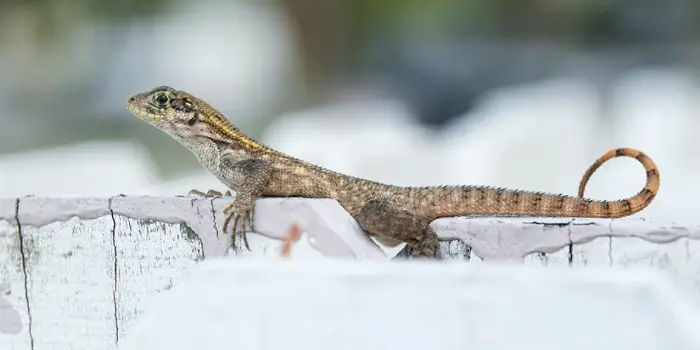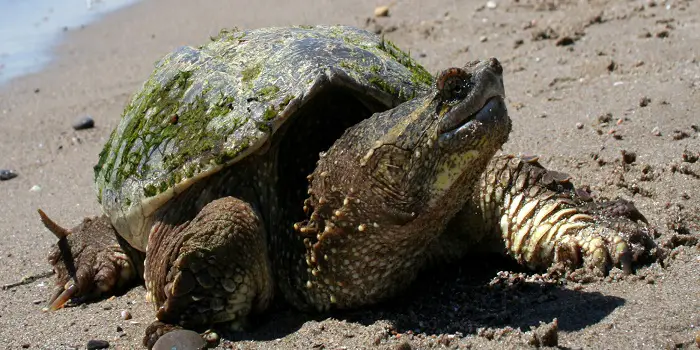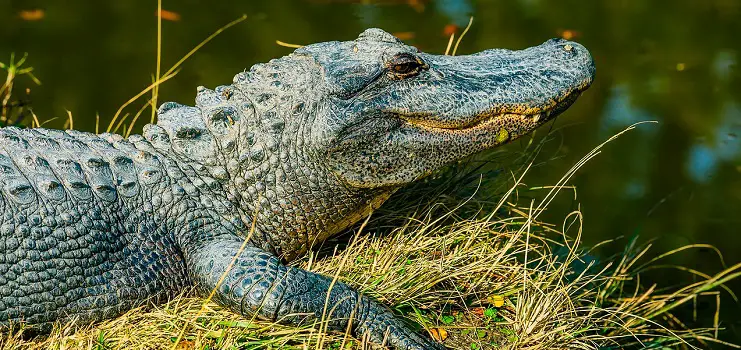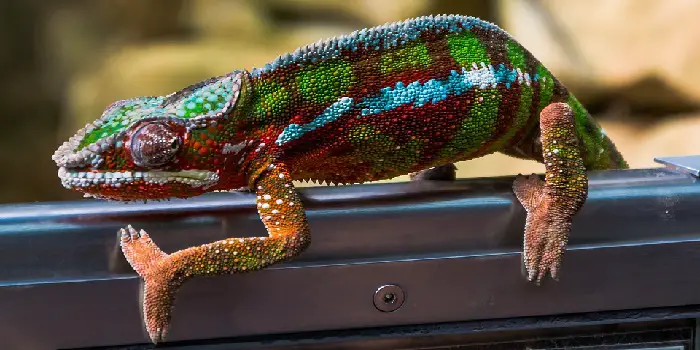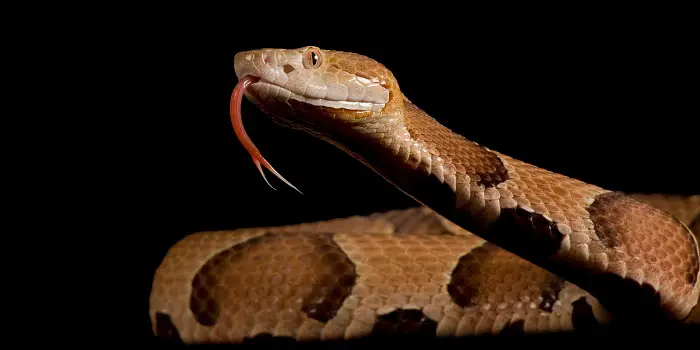
Found basically in the eastern side of America, the copperhead snake is a deadly and venomous reptile.
The species is widespread extensively right from the Florida panhandle in the south to Massachusetts in the north and Nebraska in the west.
Copperheads live for an average life span of 18 years, which is normally just like any other snake (between 15 and 25 years).
This carnivore is known to prey on rodents, insects (such as cicadas), and small birds.
Before we discuss the ways how to keep copperheads away, let us know why you need to get rid of them in the first place.
Is Copperhead Snake Dangerous?
As copperhead snakes are venomous, their toxic bite maybe sometimes hazardous for humans.
With that said, copperheads don’t go for humans; if they feel threatened, they may attack.
According to a study, it was found that copperheads bite more people than any other snake species in the U.S.
This simply means that you must be careful as they can bite you if threatened or accidentally stepped on.
Although copperheads can bite and are venomous, they are not fatal. This means copperheads usually don’t kill you.
Their bite can be treated if the injured person gets instant medical attention.
There are cases when pets (like dogs and cats) and humans survive after they have been bitten, even without any medical treatment.
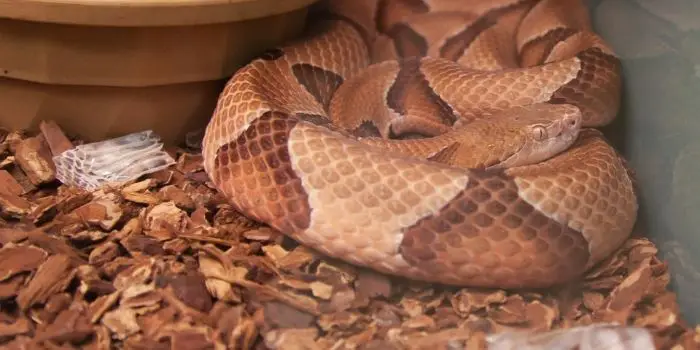
How to Get Rid of a Copperhead Snake?
If you notice a copperhead in your house, then you should immediately take safety precautions to avoid their entrance the next time and prevent any catastrophe.
Remember, you have higher chances of finding a copperhead in your yard rather than a house.
The reason behind this is that these snakes find long grasses and water bodies comfortable for themselves, which are not available inside your house.
So, those who have pools, ponds, or swamps in their house have higher chances of encountering a copperhead.
If you literally want to get rid of these serpents, then you should:
1- Maintain the yard
The simplest way to get rid of snakes is to eliminate their favorite hiding locations like long grass and overgrown plants in your yard.
Keep your lawn grasses short so that they don’t find any hiding places for themselves.
Also don’t have huge lawns, so they don’t have a wide area to roam around and hide.
A few tips you can follow to keep your garden clean and free of debris are:
- Cut the grasses short
- Remove the woodpiles
- Mow your lawn regularly
- Prune the shrubs and large trees
- Clear out the drains, gutters, and other vents
- Clean the ponds, fountains, and other water sources
- Place the trash and compost containers securely with a lid
- Avoid large rock decorations with gaps and crevices between
- Use proper bright lights that can repel the reptiles and other pests
- Avoid loose soil and mulch; instead, use thicker soil or pot your plants
These yard maintenance tips will hopefully help to keep copperheads away.
2- Get a snake repellent
Snake repellents like sprays and snake repellent plants can physically repel copperheads away from your yard without harming them.
If you want you can also try making your own DIY snake repellents at home using some basic products like ammonia or vinegar.
When you use snake repellent in your garden, you create a somewhat artificially unpleasant environment for these beings.
Plus, it leads to a number of reactions: the top being the disappearance of snakes.
You can also place these repellents for a quick fix around your outhouse, patio, shed, or pool.
It also resists the new snakes from entering the premises where repellent is spread (like near doors, windows, air vents, chimneys, crawl spaces, between the gaps, and even at foundation cracks).
3- Go for a snake trap
A lot of homeowners go for the snake trap method. You can pick metal cages, minnow traps, or glue boards to trap serpents.
Minnow traps (and the eggs) usually work great to trick and trap these snakes if you have chickens in your yard.
The moment the snake gets attracted to the bait or its smell, it will get stuck to the glue or get trapped in the metal trap.
Once it is captured, you can release them somewhere away from your yard or house, from where they may not be able to come back.
4- Set up a barrier or a snake fence
Setting up a barrier or a snake fence is another great way to keep copperheads away from your property.
Snake fencing is available online at stores like Amazon. These can also be bought at most hardware stores near you.
You can get a mesh with a 0.25” or even smaller size. Solid sheet fencing or a glass fence can also be used to prevent snakes.
Make sure you pick the right dimensions (based on your yard), and while setting them up, you dig and secure them at least 2” into the ground.
Also, fold them at the top, which will prevent the pests from climbing over these barriers.
5- Remove leftovers and other pests
Keeping your yard and other home areas clean also means that you should keep them free from leftovers and other pests like smaller bugs, rodents, and other smaller reptiles.
These are the things that can invite pests, including copperheads.
Using an insecticide to remove them from your property means a cleaner yard and fewer copperheads.
To keep your home and garden clean, you can consider feeding your pets and kids indoors. Properly clean the food bowls and leftovers when they are done.
Also, do not forget to clean the bird feeders if you have them in your yard.
Leftover seeds and nectar around their feeder can also attract rodents, bugs, and even smaller snakes that are the favorite prey for copperheads.
Excess water around a pool or overwatering the plants may also attract bugs, frogs, snails, and other pests.
Clean them properly, or else it can again bring copperheads as a result.
6- Just shove it out with the help of a broom
Well, this very idea is likely to be a little scary and shouldn’t be given a try unless you have prior experience.
Copperheads may bite you in self-defense and get aggressive if they feel threatened.
So, it is essential to be aware of your surroundings to remove the snake that has already been in your house or garden.
If you are going for a push-broom method, you can just cautiously drag the snake out of your door so that it just leaves your premises.
But, if you don’t have any experience in handling snakes, then do not attempt this method.
7- Simply call a pest control company to render help
Lastly, you have the final option, i.e., to get in touch with a professional.
As copperheads have venom, it is the best option to go for.
Pro snake trappers can easily catch serpents with minimum risks, so you don’t have the risk of getting bitten by these poisonous reptiles.
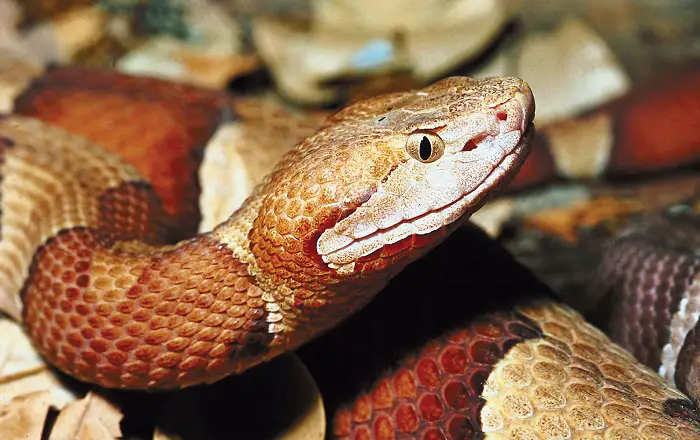
Where do Copperhead Snakes Like to Live?
Being versatile in nature, they are found on land as well as in a semi-aquatic atmosphere, meaning they have a favorable habitat in rocky areas as well as swamps, rivers, and marshes.
You can even find them in rotten wood or piled-up sawdust, where they hide or dwell on staying warm.
People living in close proximity to the eastern seaboard right from Massachusetts to Florida will get to see one.
Copperhead snakes also love to reside in tall grasses so that they remain unnoticed or at properties that are already infested by pest issues.
Seeing the plethora of food supply, these snakes will get on board.
How Can You Recognize A Copperhead Snake?
As the name suggests, copperheads are serpents with smooth heads garnished with copper scales.
Often, they are seen with a reddish-brown glint on their body with brown cross bands.
One of the unique features to tell if it’s a juvenile copperhead is its lemon-yellowish tail which helps them to attract its victims, especially caterpillars and frogs.
This snake breed also has a thick body, and they often emit a musk that has a faint smell like that of cucumber.
An adult serpent may reach a length of about 2 to 3 ft.
You can also identify copperheads by their poop which tends to be mushy and smooth.
And compared to other snakes like garter, it leaves more scat.
Although there are snakes that look similar to copperheads, because of their unique color and other features, copperhead snakes can easily be recognized by their fellow mates.
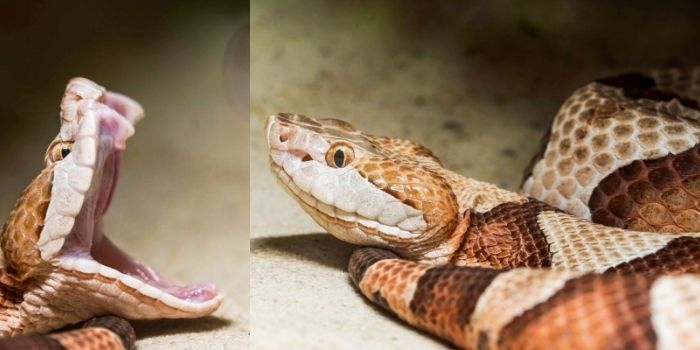
Identifying Copperhead Among Other Snakes
If you are trying to identify copperheads among other snakes in your yard, here is a comparison between a copperhead and the other common snakes that are found in the USA.
1- Garter
There is a wide range of differences you will find between these two species of snakes.
- Garter snakes are smaller in size and prefer to hang out in a garden, yards, and grassland.
- They don’t have venom and can grow to 1 to 2 ft. in length.
- Another unique feature of this snake is that they have three full-length, yellow bands that move straight down to the snake’s body.
- Fully grown snakes are of different colors like olive green and grey.
Because of all the above-mentioned points, a common garden or garter snake is completely different from the reddish copperhead snake, which is bigger, stronger, venomous, and more vigorous.
2- Cottonmouth
Also known as the “water moccasin,” the cottonmouth is famous for its telltale spec i.e., it’s the white internal mouth that it reveals when it feels attacked.
The size of the cottonmouth is the same as the copperhead, but it features different colors.
Where cottonmouth is muddy brown in color with grey or black bands, the copperhead is of the natural copper color.
Some other recognizable differences are given below:
- Cottonmouth has a timid nature and likes to spend their time either swimming or hiding.
- While cottonmouths are 2-4 feet long, copperheads are smaller at 2-3 feet.
- Copperheads are seen in the north and west, while cottonmouths reside in the southeastern provinces.
3- Black snakes
When you talk about black snakes in the United States, people often think about the black rat snake.
As the name suggests, a black rat snake is black in color and lives in marshy, woodland regions.
Well, these snakes reside in similar areas as copperheads, but they are much larger.
Fully grown adults are around 3-5 ft. long and have a thick body type.
These snakes are shy from humans, but if threatened, they may get aggressive.
They make a sound like a rattlesnake by shaking their tails to scare the predators away.
While the black rat snake doesn’t have venom, copperheads are venomous.
It kills its prey by tightly wrapping the body until it suffocates and dies.
4- Rattlesnakes
Rattlesnakes are commonly found in dry areas such as North America.
You will mostly find them in a scrubland, desert, or dry region. Some of the major differences between copperhead and rattlesnake are:
A noticeable difference between these snake species is that the rattlesnake has a unique end to its tail which it uses to scare the predators away.
It also has a unique head shape with flared nostrils.
While copperhead is of penny color, rattlesnake ranges from light brown, tan to dark brown diamond shades on its back and sides.
Rattlesnakes are usually from 1 to 8 feet in size, proving to be one of the largest snake breeds in the USA.
Copperheads, on the other hand, are just 2-3 ft. long max.
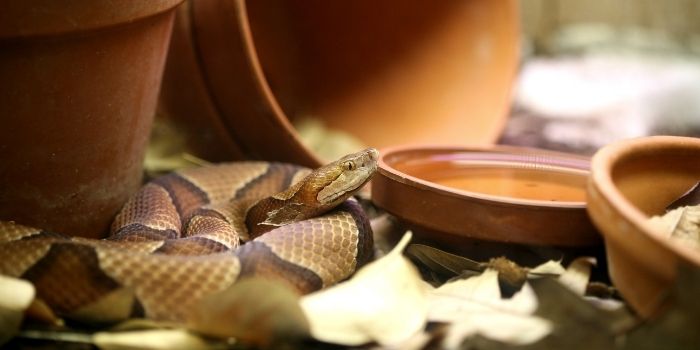
Should You Kill a Copperhead Snake in Your Yard?
Although copperheads are not an endangered species you should never try to kill a copperhead snake (or any other snake) for that matter.
In some states, killing them can even be illegal.
The best strategy would be to use natural repellents to help get rid of them naturally.
You would be surprised to know that many people prefer not to remove these snakes from the yard and leave them as it is.
This is simply due to the many benefits they may offer.
Since they feed on lizards, mice, rats, cicadas, ticks, and various other smaller snakes they prevent all the uninvited rodents and pests in your yard.
Thereby helping your garden crops and the overall health of your family members.
For the most part, copperheads will try to avoid humans and will do nothing to you if not threatened.
Unless you are a gardener or want to work in your yard most of the time, you can just avoid them and let them do their job – they can work as your outdoor pest control 24/7.
Are There Any Natural Predators of Copperhead Snakes?
Although many predators will prey on snakes, there are very limited ones available for the copperheads due to their large size.
This will also depend on the area where you live and the kind of native predators that are around.
Remember that copperheads are highly vulnerable when they’re still young and small.
This means if you have the right type of native predators around, they can help control the copperhead on your property.
Some of the known predators of copperhead snakes include:
- Opossums
- Coyotes
- Bullfrogs
- Alligators
- Horned owls
- American crowns
- Snakes like garter, coral, racer
- Feral cats and other domestic cats
- Red-tailed and Broad-winged hawks
You will need to do some research on the species that can be found near your home.
And then you can attract them if you want to stop copperheads from coming and managing your problem.
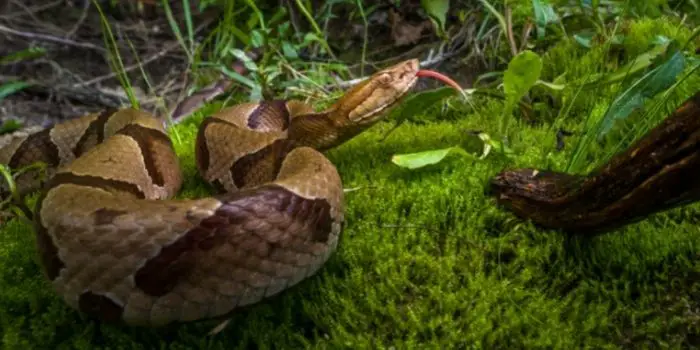
Other Related Questions:
Does “Snake Away” Repel Copperheads?
IMO, “Snake Out” proves to be a better alternative to “Snake Away” when it comes to keeping off the copperheads.
With that, I don’t mean that “Snake Away” does not work for repelling snakes.
It works great for other snake species, but for copperheads, I think “Snake Out” is better.
“Snake Out” is a powder that smells like cinnamon. This proves offensive to snakes but is great for yard owners.
Can Copperhead Snakes Swim Underwater?
Yes, copperheads can swim underwater if it’s needed.
However, most of the time, they do swim while keeping their head above water.
Although good swimmers, during most of the warmer months, they like to bask on rocks or can be found hanging on branches near the water bodies.
This all means that if you doubt their presence on your property and want to get rid of them, you should also check them near the water bodies like the backyard pond.
They can often also get in through the drains in your toilet or kitchen.
What Plants Repel Copperhead Snakes Away?
Using repellent plants is definitely one of the better ways to keep copperheads from snaking around.
You can pick a few of them from your local nursery and grow them easily either by directly planting them into the soil or in pots.
West Indian lemongrass (or simply lemongrass) is a strong-smelling plant that’s my favorite for repelling copperheads.
Its peculiar citronella oil-like smell works so great at repelling copperhead snakes.
Not only copperheads, but this unpleasant smell also helps in keeping away mosquitoes, no-see-um bugs, and other pests from your yard.
If you do not like planting lemongrass for copperhead snakes in your garden, you can try some of these alternatives:
- Garlic plants
- Onion plants
- Marigold plants
- Mother-in-law’s tongue
What to Do If You Get Bit by A Copperhead Snake?
When bitten by copperheads, the symptoms like redness and pain may take longer to appear.
But you would need to seek medical attention immediately or as soon as possible.
When the victim reaches a concerning medical facility, it’s important to clean the wound at the bite site.
Also, if possible, elevate the limb to reduce the effect of venom from spreading.
In any case, DO NOT:
- Try to use devices such as a tourniquet
- Try to suck the venom out of the bitten area
- Put the ice on the wound if bitten by a venomous snake
The Conclusion
If you notice a copperhead in your yard or inside the home, don’t panic!
First, educate yourself properly about them and find out which kind of snake it is.
And then use one of the tried and tested methods mentioned above to remove them from your property.
If you have time, you should also call a pest removal company specializing in snake removal.
Hiring professionals will help you in either killing the serpents in your yard or they can capture them and taking them to a remote location for release far from your property.
Share the post "7 Tricks to Keep Copperhead Snakes Out of Your Yard"

Welcome to ProShieldPest.com. I am Tina Jones. I have been working as a pest removal professional in Winslow, Arizona lately. At present, I love to spend my time with my family as a retiree.
Here I share all my knowledge and experiences to help people understand better how they can stop pests at their homes without actually killing them. Hopefully, the information you will find here will help in safeguarding your home! You can check more about me here.

